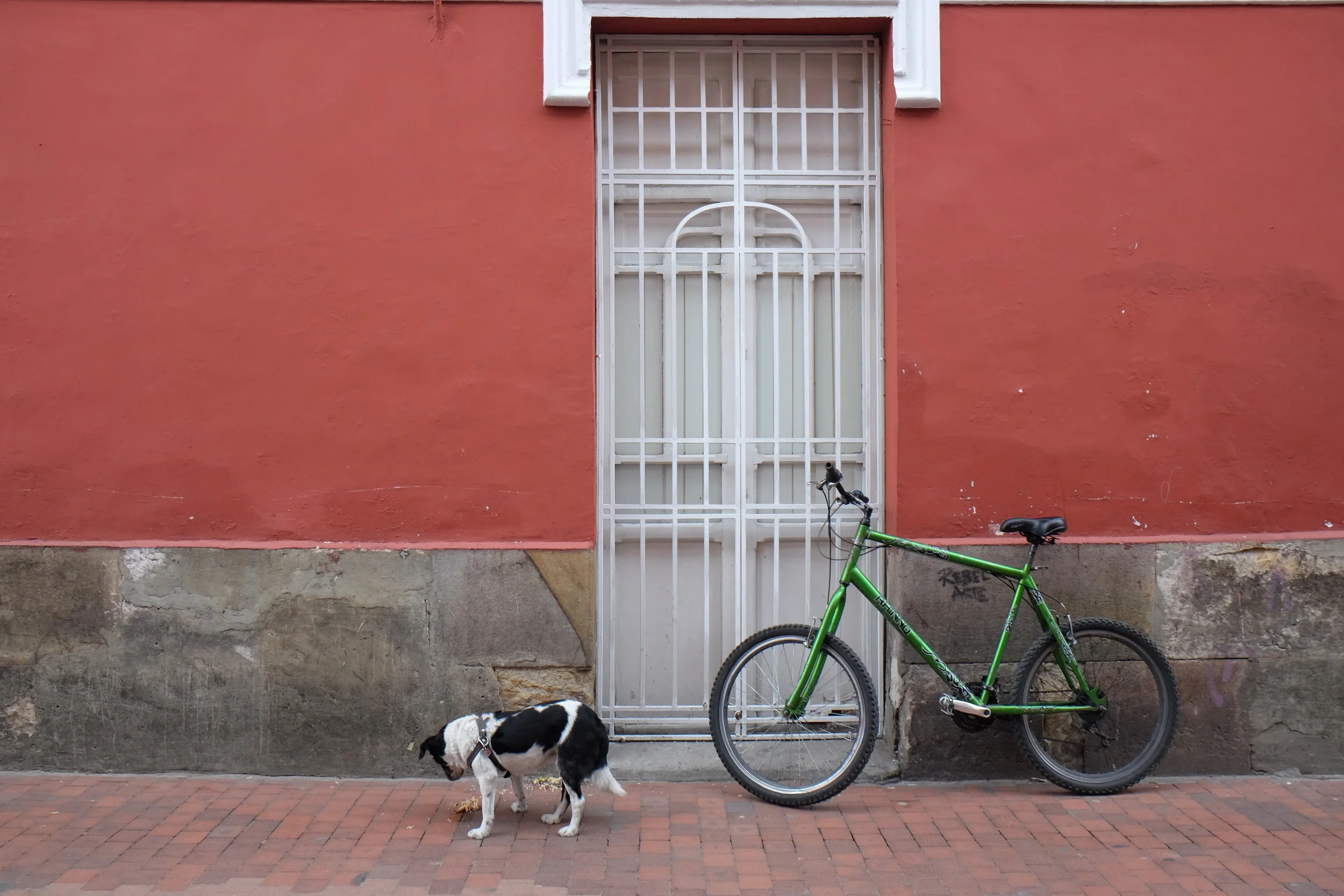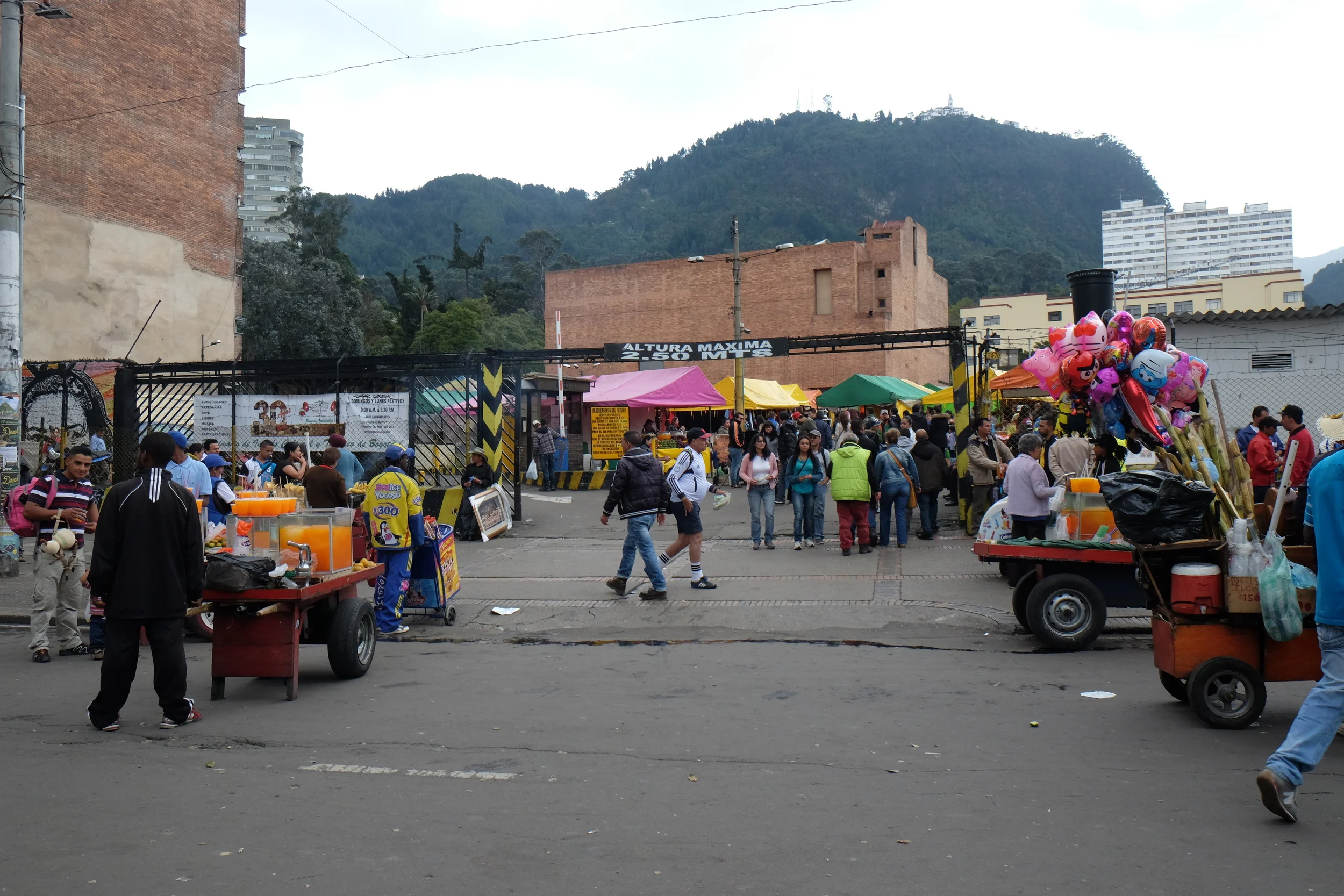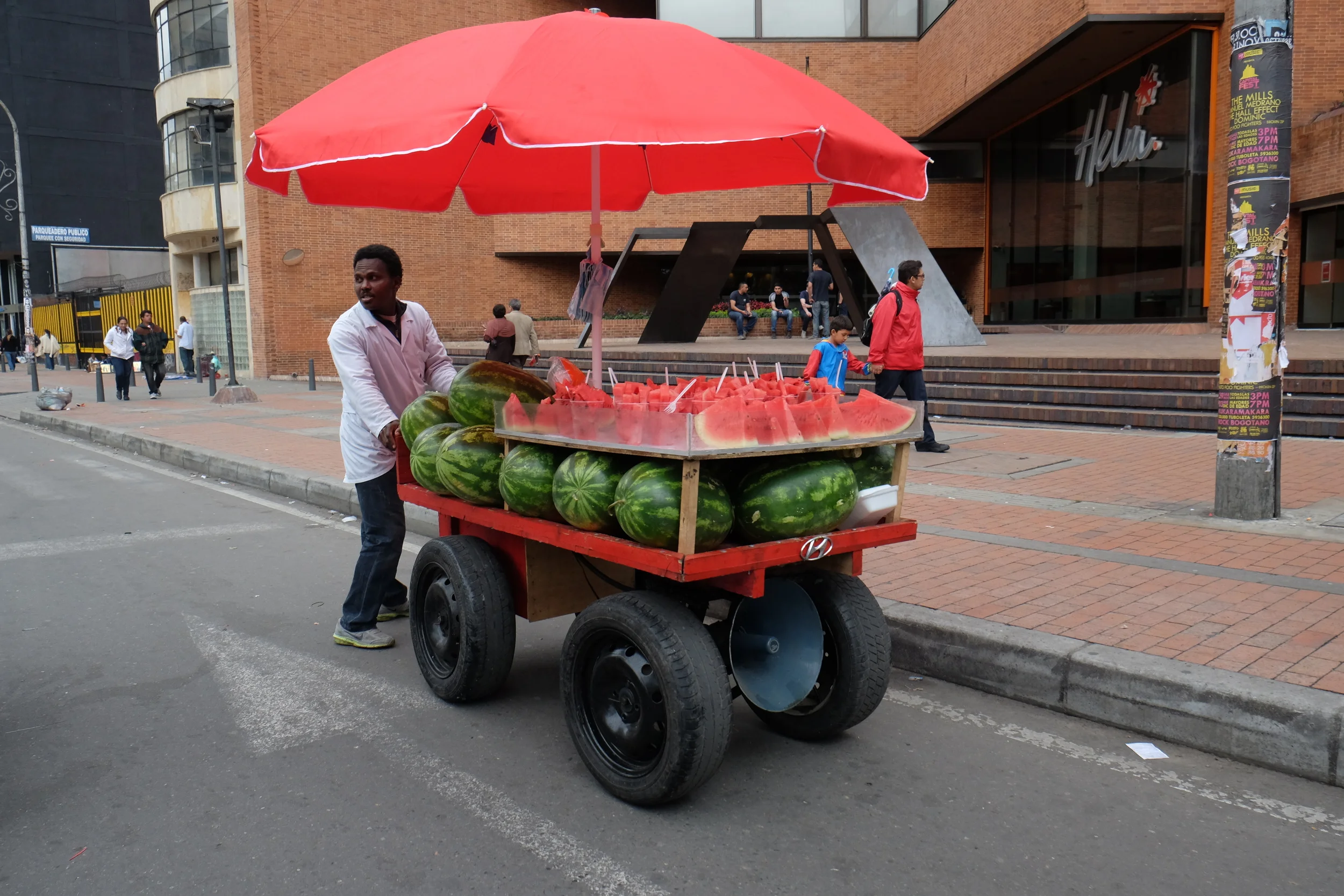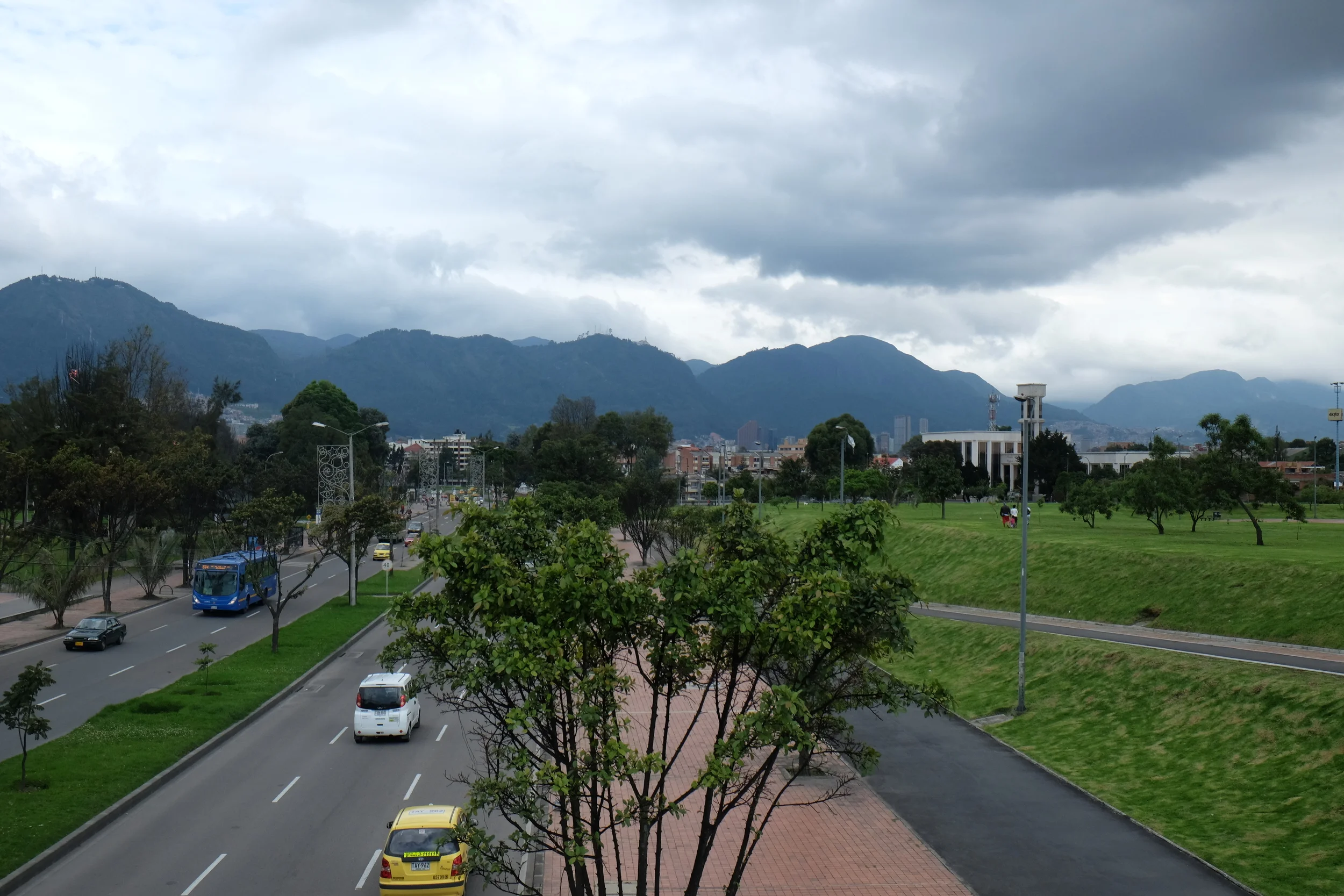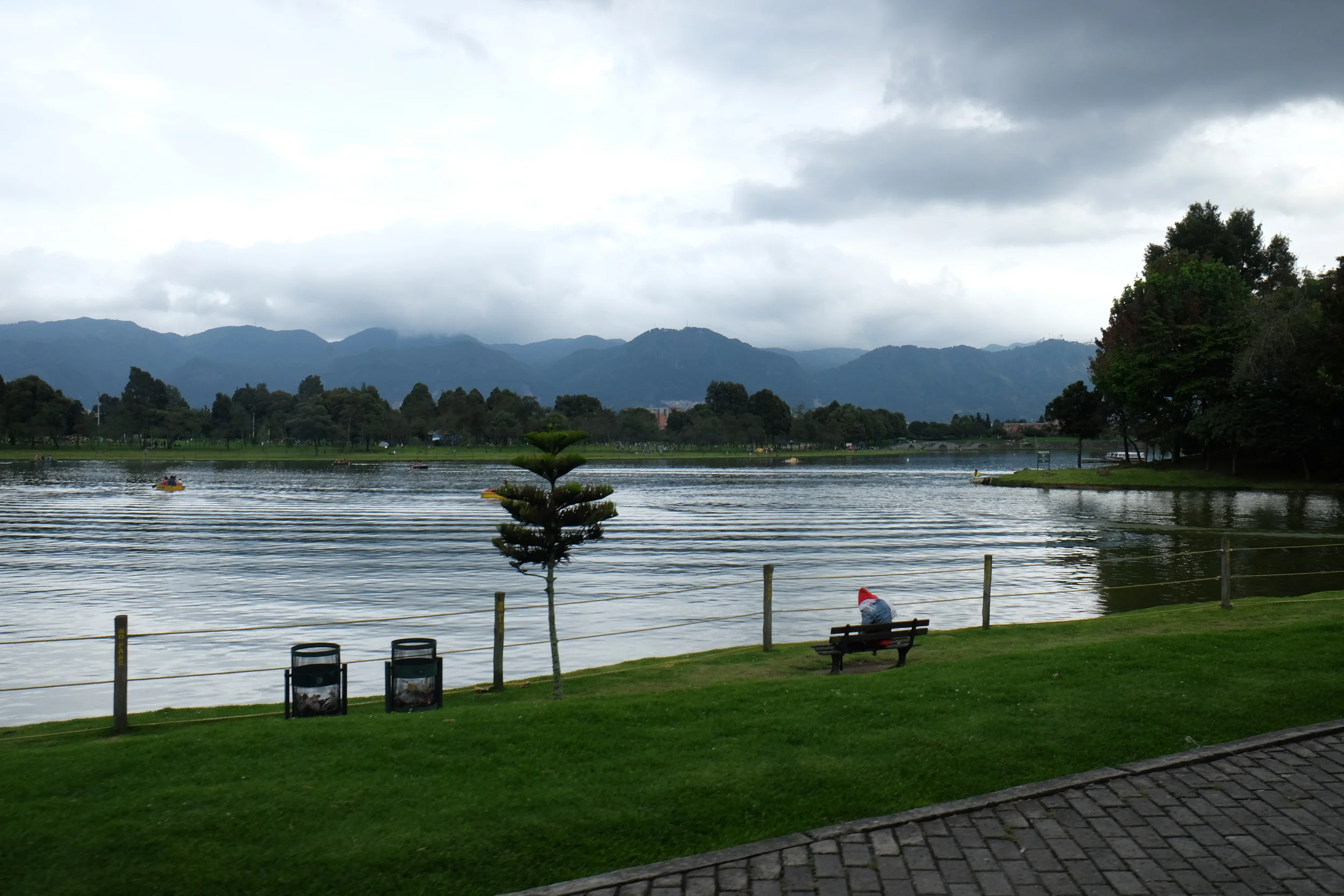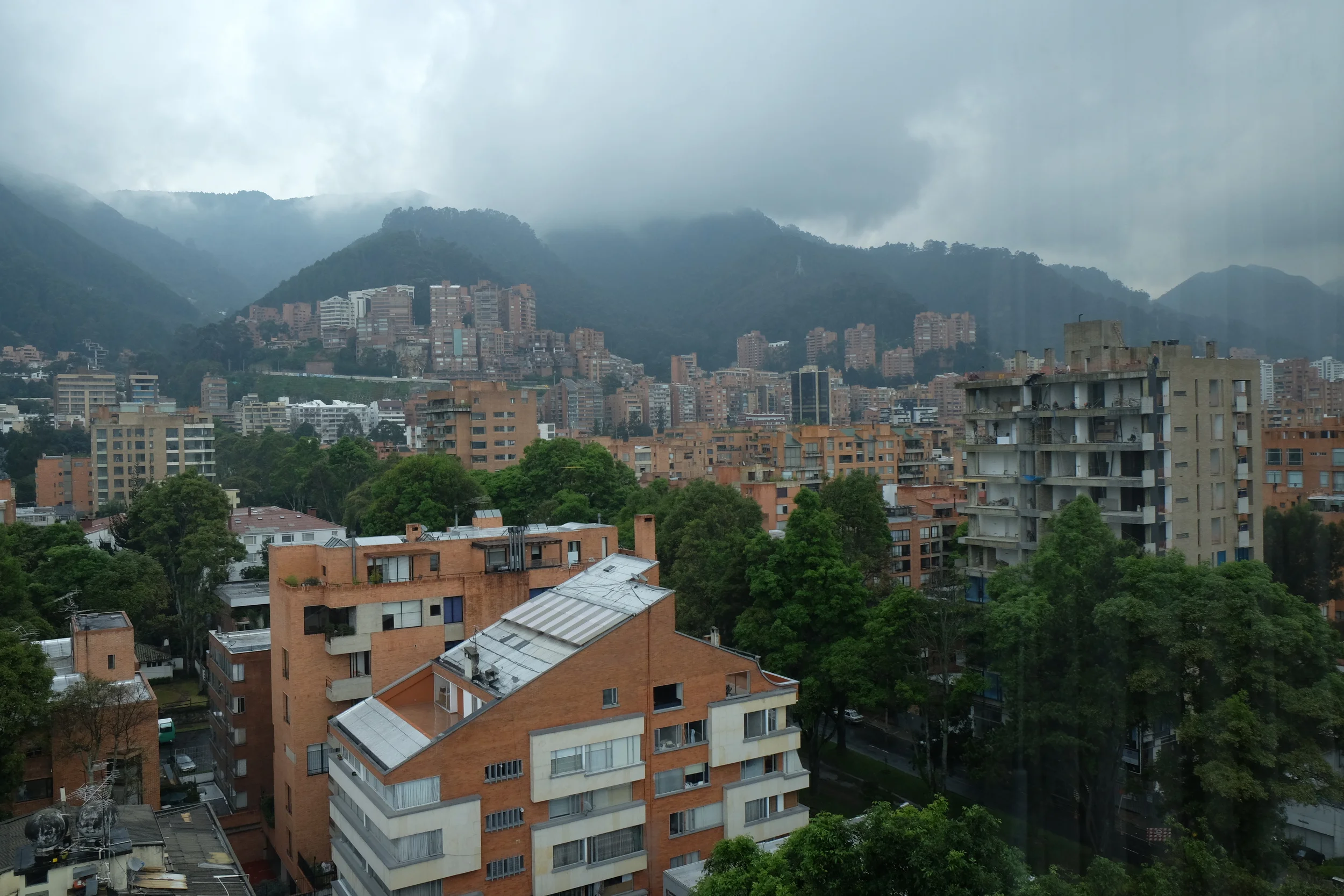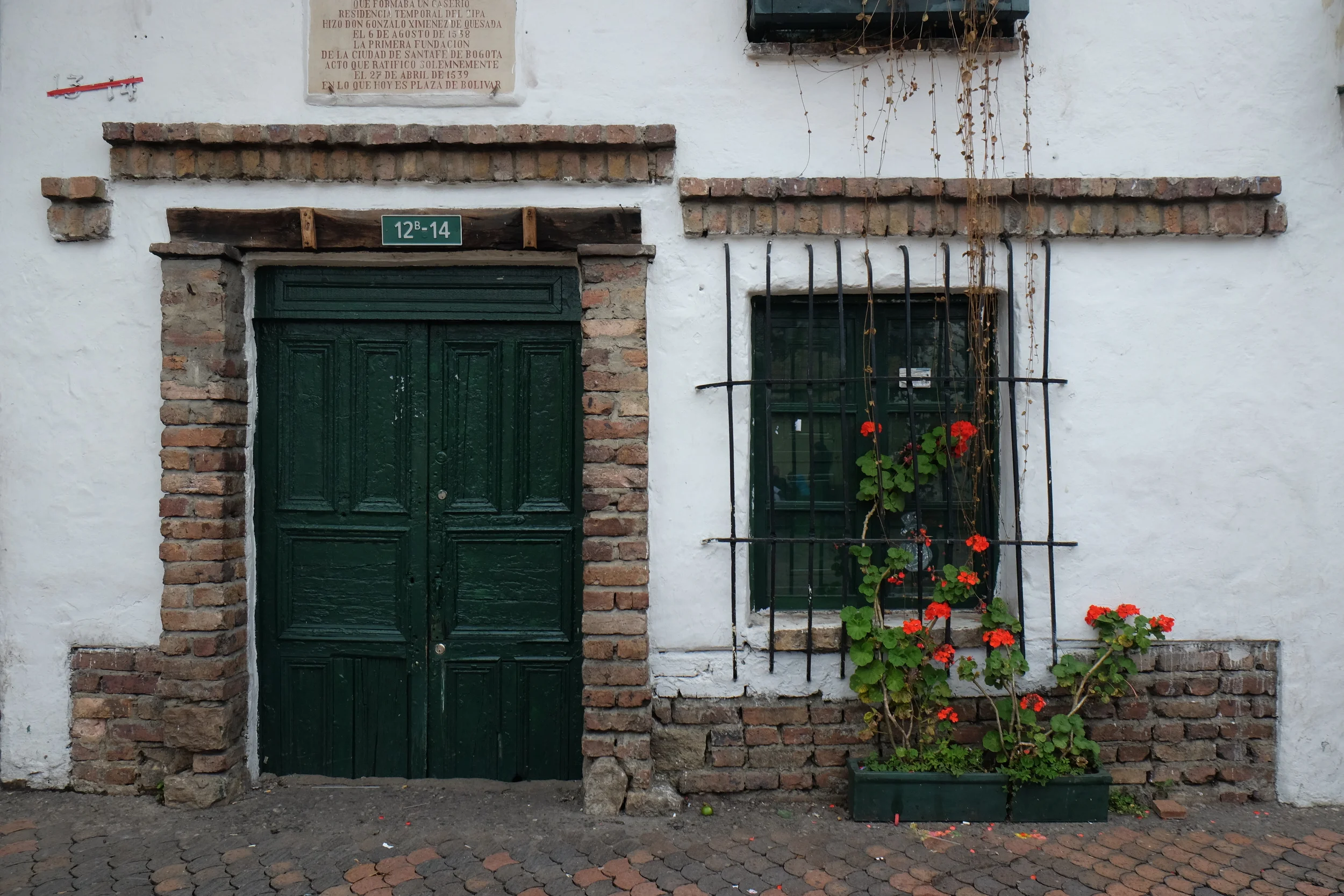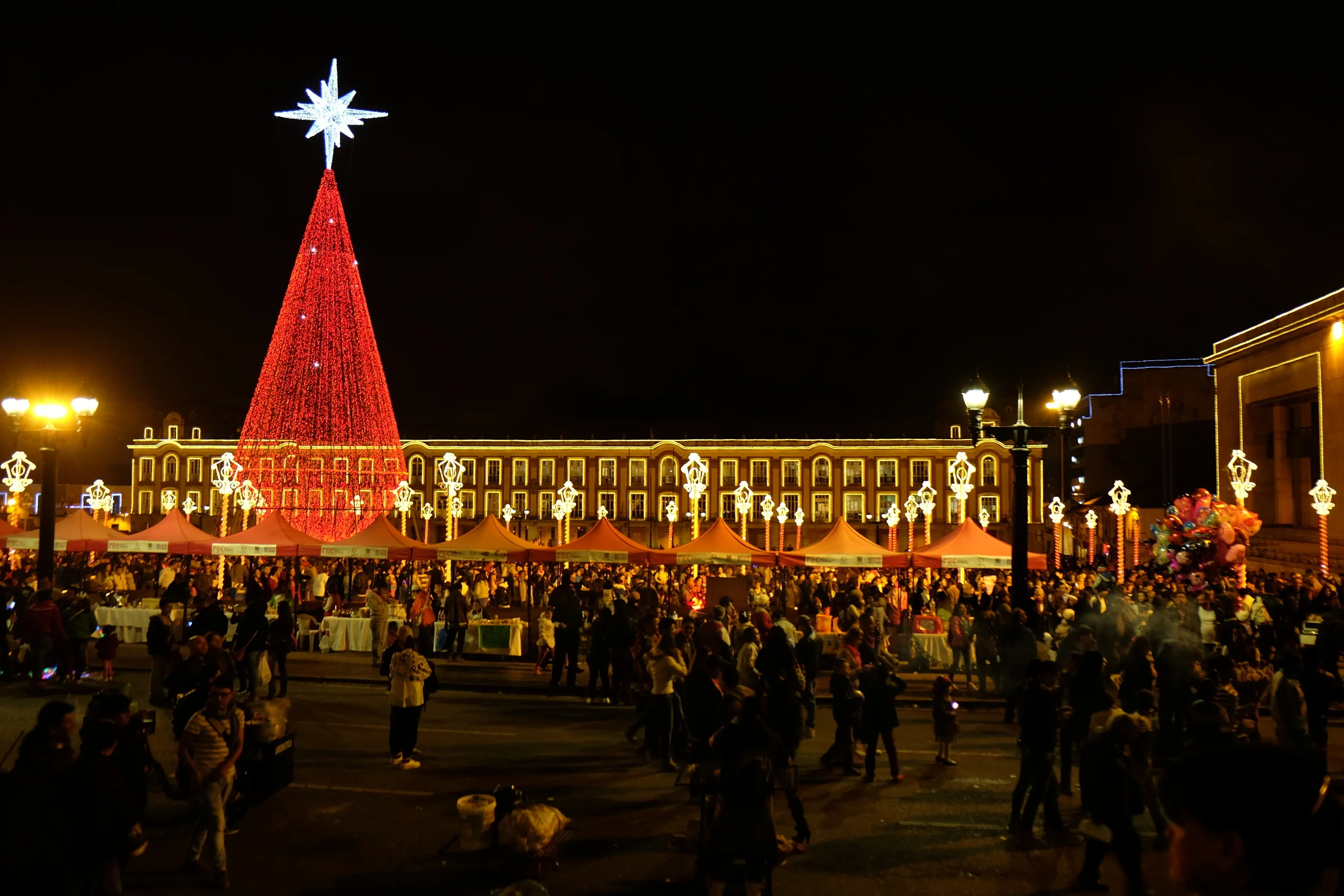We had been filling our days with hikes and walks and our nights with long-distance bus rides. Our bodies were tired and, though busy and crowded, Bogotá was for us a much needed place to decompress. Eight hours after leaving Salento, we once again found ourselves arriving at the bus terminal in the middle of the night, but heeding to past experience, we slumped down onto a bench and waited for the sun to come up before grabbing a cab to the hotel. Not a hostel, not a hammock. A hotel.
We checked in early, took a short nap, and as difficult as it was to pull ourselves away from modern amenities - we hadn't had a hot shower since leaving home - hopped on a bus to La Candelaria and joined a bike tour of the enormous city. It was a pleasant way to take it in, flying past heaps of people, weaving in and out of traffic, while still seeing and smelling everything around us.
In just a short amount of time, we rode nearly 30 kilometers through 2 major parks, a stadium, the Red Light District, private neighborhoods, universities, the German and British cemetery, and busy plazas and shopping areas. We even picked up some pastries and enjoyed them by a lake where we were given a brief history lesson on Colombia: the Spanish colonization, the revolution led by Simon Bolivar, the two political parties that gained power, the two guerrilla groups and, subsequently, the paramilitary that formed as a result. We learned the significance of each stripe on the national flag: yellow representing gold; blue, the two bodies of water on either side of the country; and red, the blood spilt by the people for their country during the revolution. After the tour, our guide Juan walked us to Place Bolívar, decked out with holiday decor, where we watched families out and about, enjoying the last few hours of the long weekend. We got a taste of our first oblea - a popular, traditional dessert consisting of jam, caramel, and cheese spread between two thin wafers - and freshly brewed herbal passion fruit tea, both so sweet and so delicious.
Juan gave us a tip on the city's layout, which helped us to navigate our way back to the hotel. Calles run east/west while carreras run south/north, everything numerically ordered. Addresses begin with the calle, followed by 2 numbers separated by a dash; the first is the intersecting carrera and the second, the location of the building. He also taught us Colombia's 11th commandment, No Dar Papaya, an expression that's translated as Don't Give Papaya and that means not to give others the opportunity to take advantage of you. He saw us off on our bus, making sure we got on safely and didn't give any papaya. With our newfound knowledge, we made it back without a map or the guidance of a local.
The next day we grabbed lunch around the corner from the hotel and realized how markedly different the area was from the rest of Bogotá. Juan had said that Parque de la 93 is an upperclass neighborhood, but not until that early afternoon did we notice the men scuttling around in suits and ties, the women made up, their hair and skin looking fresh and silky. There were no panhandlers or litter to be found. Restaurants offered a broad range of international dishes and prices were higher than elsewhere.
We enjoyed our $8 burritos from Sipote, a Mexican fast food joint with an uncanny resemblance to Chipotle, parted with the comforts of first-world privileges, and then boarded our longest-distance bus yet, a dreaded 25-hour journey to Ecuador.

